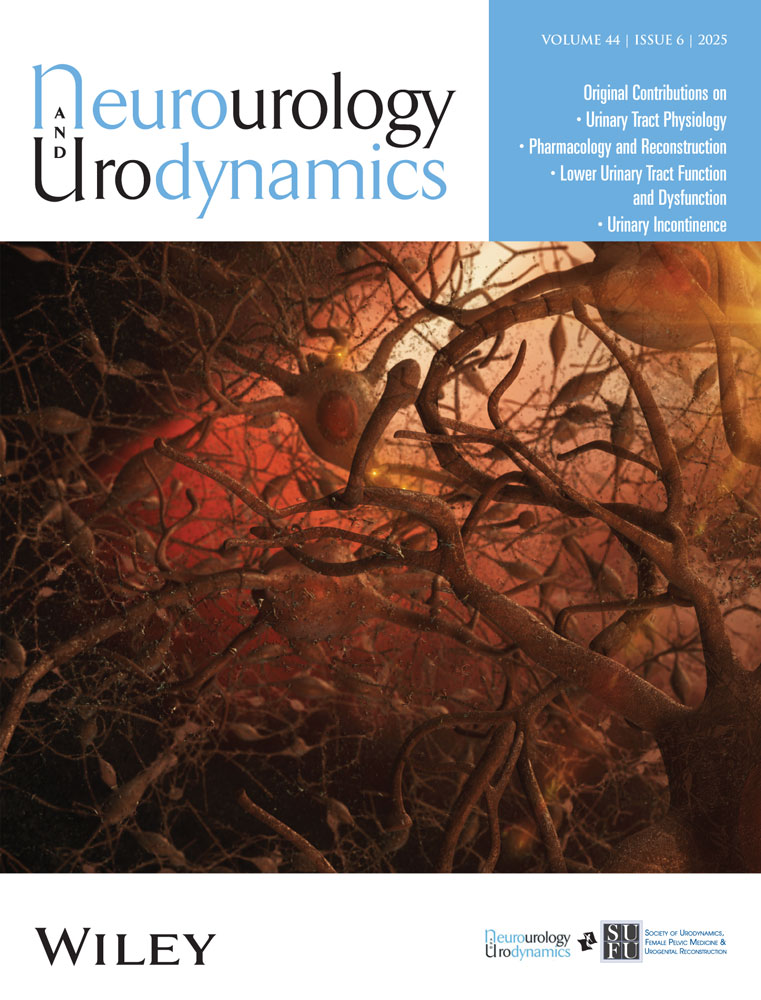Bladder sensation in peripheral nerve lesions†
No conflict of interest reported by the author(s).
Abstract
Objective
To present bladder sensory data of three common peripheral nerve lesions (e.g., distal, intermediate/focal, and proximal).
Methods
We measured first sensation (FS) and bladder capacity (BC) (not exceeding 600 ml) in 71 patients with peripheral nerve lesions: 35 diabetic neuropathy (D group), 6 post-pelvic surgery (S), and 27 cauda equina syndrome due to lumbar spondylosis (L). We excluded those with detrusor overactivity or low compliance that might affect bladder sensation.
Results
The mean FS was 301.7 ml (D), 271.3 ml (S), and 189.4 ml (L), with the largest being in the D group (P < 0.05); the mean BC was 495.2, 475.4, and 391.4 ml, with the largest being in the D group (P < 0.05); who commonly had less frequent toileting. The mean post-void residual volume was 106.5, 29.0, and 42.0 ml; the values tended to increase along with BC. In the D group, the mean FS in patients with skin hypoalgesia as detected by pin prick and in those without it was 407.8 and 210.0 ml. The percentage of patients with FS < 100 ml was 5.7%, 0%, and 7.4%, respectively, who commonly had urinary urgency and frequency.
Conclusions
Bladder sensation is affected in diabetic neuropathy more severely than in intermediate/proximal lesions, together with somatic sensory disturbance. Bladder sensory disturbance leads to less frequent toileting, resulting in bladder over-distension and large post-void residuals. A small proportion of patients with peripheral nerve lesions develop urinary urgency, presumably reflecting irritation of the afferent nerve fibers or the urothelium. Neurourol. Urodynam. 25:763–769, 2006. © 2006 Wiley-Liss, Inc.




